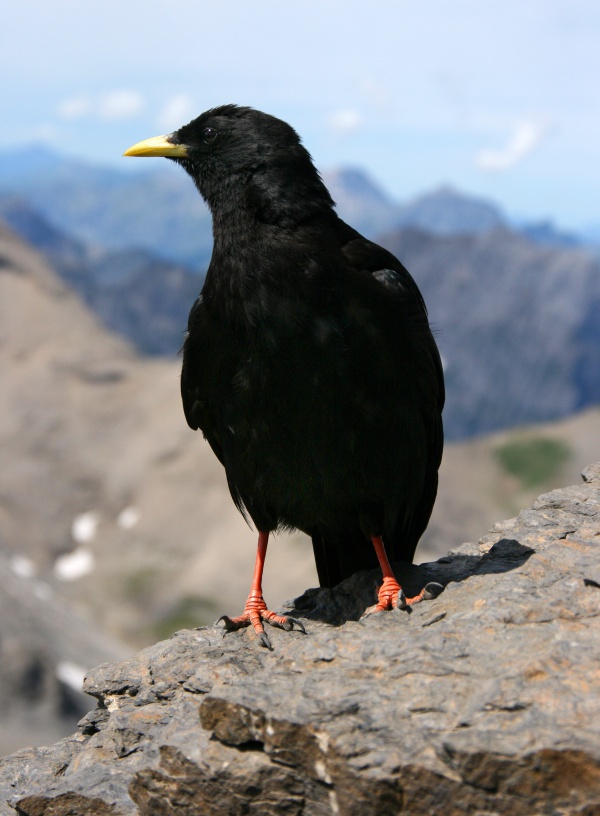Facts About Alpine chough
The Alpine chough, also known as the yellow-billed chough, is a captivating bird from the crow family. It is one of only two species in the Pyrrhocorax genus and has two subspecies that breed in high mountainous regions extending from Spain through Europe and North Africa to Central Asia and Nepal. Remarkably, it might nest at higher altitudes than any other bird, with its eggs specially adapted to the thin mountain air.
The Alpine chough is easily recognizable by its glossy black feathers, bright yellow beak, and red legs. It is also known for its distinctive calls and acrobatic flying style, often performing aerial maneuvers with its feathers spread wide. These birds are loyal partners, pairing for life and consistently returning to the same breeding locations, often in caves or cliff crevices. They build nests from sticks, lined with grass, and typically lay three to five brown-blotched whitish eggs. Their diet varies with the seasons: they hunt for invertebrates in the summer and switch to fruit in the winter. They are also known to approach tourist areas for extra snacks.
Originally described by Linnaeus as Corvus graculus, the Alpine chough was later reclassified into the Pyrrhocorax genus. There are two main subspecies: the nominate subspecies, found in Europe, North Africa, and parts of Asia, and the digitatus subspecies, primarily found in the Himalayan region.
These birds are widespread, inhabiting mountains from Spain to China, and they usually remain in their high-altitude homes. However, climate change could push their habitats even higher. Although they are not globally threatened, local populations have seen declines due to changes in agriculture and other human activities.
In terms of behavior, Alpine choughs are monogamous and nest in cliffs or caves. They face natural predators like falcons and eagles and are hosts to various parasites. Despite these challenges, they are listed as Least Concern on the IUCN Red List due to their large population and wide range. However, local declines remain a concern, primarily due to habitat loss and human interference.

 Uzbekistan
Uzbekistan